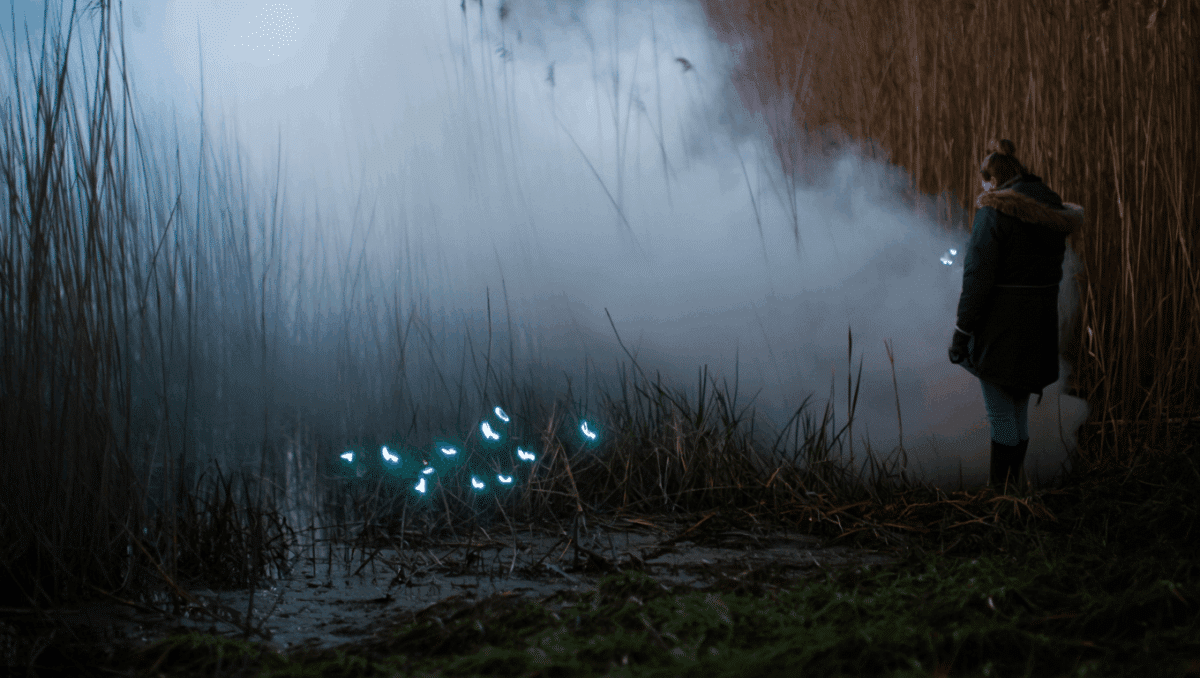Show summary Hide summary
On foggy nights in marshes around the world, travelers have reported seeing small, bluish lights bobbing above the ground — the will-o’-the-wisps of legend. For centuries those ghostly flames were explained with folklore and superstition. Now, a cluster of recent laboratory experiments and field observations is building a concrete chemical and biological picture of what produces these flickering lights — and why those same processes could matter for how life first began on Earth.
Scientists are no longer content to call the phenomenon “mysterious.” By recreating glowing gas mixtures and isolating microbes from wetlands, researchers have narrowed the list of viable explanations and linked the lights to real-world chemical reactions and living organisms. The result is a new narrative that connects marsh gas chemistry, microbial metabolism, and the energy flows that may have powered life’s earliest steps.
Laboratory tests recreate ghostly glows and point to specific chemical reactions
In controlled experiments, researchers have been able to produce faint, sustained light from mixtures of gases and soils that mimic wetland conditions. These tests show that the ghost lights can arise from chemical oxidation reactions that emit visible light — a process known as chemiluminescence — rather than from simple combustion or phantom spirits.
Leading chemical mechanisms that produce light
Oxidation of reduced phosphorus compounds: Decomposing plant material in waterlogged soils can release small phosphorus-containing gases. When these react with oxygen in trace amounts, they can produce luminous byproducts.
Methane and other hydrocarbons igniting in pockets of air: Localized heating or catalytic surfaces in soil can set off short-lived flames or glowing edges of combustion without large fires.
Chemical reactions involving peroxide and metal ions: Peroxides can oxidize organic molecules in the presence of iron or copper, giving off light as intermediates fall back to lower-energy states.
Microbial metabolites that spontaneously luminesce: Some bacteria and fungi generate light through enzymatic reactions, or produce compounds that luminesce when they react with oxygen.
Although the exact mix varies from site to site, experiments indicate that tiny amounts of reactive gases — mixed with soil minerals and organic detritus — can produce luminous plumes similar to the will-o’-the-wisp sightings reported historically.
How microbes and wetlands join the chemistry to make light
Field teams sampling peat bogs and salt marshes are finding a recurring cast of microbial players and gas signatures at locations with reported lights. In many instances, pockets of methane and trace phosphorous compounds coexist with dense bacterial communities capable of modifying those gases.
Microbial breakdown of plant material releases methane, hydrogen sulfide, phosphides and other reduced species into soil pores and shallow water layers.
When those reduced gases reach slightly oxygenated zones — for example, where groundwater bubbles meet the atmosphere — rapid oxidation can produce short-lived, glowing chemiluminescent reactions.
Some microbes can also produce light directly through biochemical pathways similar to classic bioluminescence, creating another possible source for faint blue-green glows.
These observations suggest that will-o’-the-wisps are not a single phenomenon but a family of light-producing processes tied together by wetland chemistry and microbial ecology. That diversity explains why reports vary so widely in color, duration and behavior.
Why these discoveries could reshape thinking about the origin of life
Beyond explaining folklore, the same chemical systems that produce marsh lights may have played a deeper role in Earth’s past. Scientists argue that the interplay of reactive gases, mineral catalysts and shallow water environments could create the energy gradients and reactive compounds essential to prebiotic chemistry.
Energy gradients — places where chemical potentials differ across small distances — are crucial for driving early metabolisms. Wetlands, with their alternating oxidized and reduced microenvironments, provide natural redox interfaces where chemistry can be concentrated and sustained.
Key links to prebiotic chemistry and early metabolism
Oxidation reactions that emit light also generate highly reactive molecules and radicals, which can drive synthesis of more complex organic compounds.
Mineral surfaces found in mud and sediments can act as catalysts, concentrating reactants and guiding molecule assembly in a way that might favor proto-metabolic cycles.
Microbes that exploit these gradients today demonstrate pathways that primitive life could have adapted, showing plausible evolutionary routes from chemistry to biology.
While scientists cannot claim that glowing marsh gas directly created life, the processes behind will-o’-the-wisps form part of a larger suite of environmental conditions — localized energy sources, catalytic surfaces and abundant organics — that make wetlands a compelling stage for origin-of-life scenarios.
Astrobiology and the search for life beyond Earth
The mechanisms under discussion also have implications for detecting life on other planets. Remote sensing searches look for chemical disequilibria — gases that shouldn’t coexist unless something is producing them. Where detectable signatures like phosphine or methane are found, scientists consider both abiotic and biological explanations.
On planets or moons with subsurface water and volcanic inputs, the same redox chemistry could create detectable gases or even transient luminescence detectable by sensitive instruments.
Careful laboratory characterization of chemiluminescent reactions helps researchers avoid false positives in the search for biosignatures and improves models of planetary atmospheres.
Recent debates over trace gases in atmospheres like Venus’ underscore how important it is to understand both microbial and nonbiological pathways for producing reactive phosphorus and methane-like compounds.
Folklore, eyewitness reports and modern monitoring
Stories of will-o’-the-wisps stretch across continents — from European peat bogs to Southeast Asian rice paddies. Modern investigators are combining historical records with modern instrumentation to link those eyewitness accounts to measurable environmental signatures.
Time-lapse and infrared cameras capture transient glows that coincide with gas bubble releases from wet soils.
Gas sampling often reveals spikes in methane and trace phosphorus species at the moment of visible luminescence.
Ecologists mapping microbial communities find correlations between certain bacteria and sites where lights are reported repeatedly.
Together, these tools are transforming anecdote into data and helping scientists predict where and when fields of ghostly lights might appear.
Next steps: experiments, field campaigns and new sensors
Researchers are planning targeted campaigns to test hypotheses under natural conditions and refine the lab models that reproduce marsh luminescence. Future work includes more sensitive chemical sensors, isotope analyses to distinguish biological from abiotic gas sources, and long-term ecological studies of the microbial players involved.
Deploy multi-sensor rigs in wetlands to link light events with gas flux, soil chemistry and microbial activity in real time.
Run isotope tracing studies to identify whether methane or phosphides come from biological metabolism or from abiotic mineral breakdown.
Use high-speed spectroscopy to characterize the light emitted, which can reveal the exact chemical pathways at work.
As experiments advance, the frontier between folklore and chemistry continues to narrow, and the humble will-o’-the-wisp is revealing itself as a small but telling piece of the puzzle about how energy and matter conspire to create complexity in the natural world.
You might also like:

William Anderson is a multimedia producer specializing in videos, podcasts, and interactive galleries. With five years of immersive content creation, he turns information into a rich audio‑visual experience. His storytelling skills draw you directly into the heart of every story, on any platform.
Give your feedback
★★★★★
Be the first to rate this post
or leave a detailed review

